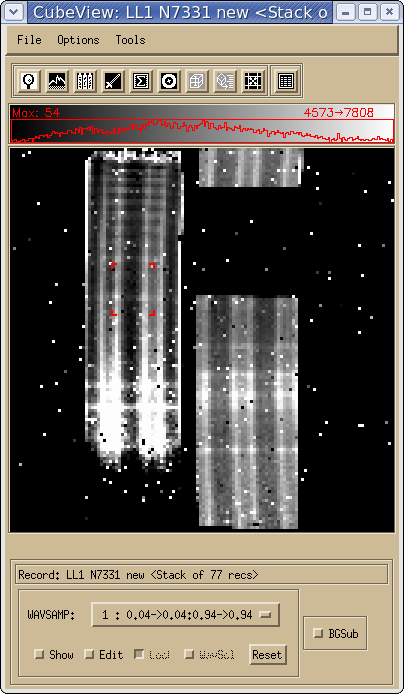 With:
With: 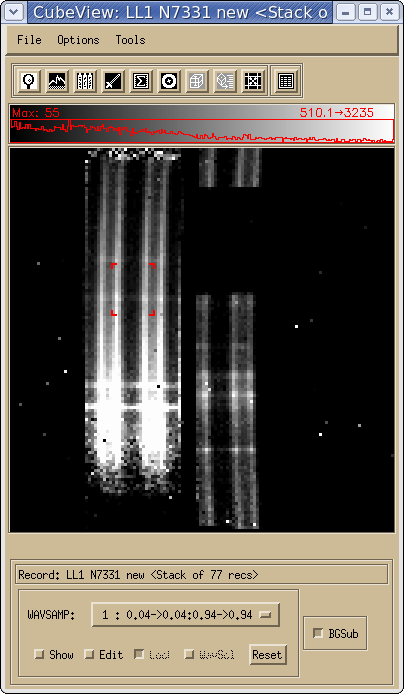
Update: See Two Years in the Life of LL, showing the degradation of LL.
Update: See also A Year in the Life of LH, a visual exploration of LH's degrading rogue pixel properties.
Certain on-order pixels in the IRS modules --- in particular, on the antimony LL and LH arrays --- seem to vary on timescales of many hours to days. Many of these are not marked in the default PMASK and BMASK mask files which identify, respectively, permanent bad pixels, and pixels which suffered from saturation, cosmic ray hits, etc. The effectiveness of sky-subtraction at restoring on-scale many of these rogue pixels is illustrated, and a proposed method for utilizing, in the absence of dedicated sky observations, the routine IRS dark measurements for such a purpose is outlined.
When close-in-time sky backgrounds observed in the same module and exposure sequence are subtracted at the BCD level, not only is the sky removed, but the majority of the hot or anomalous pixels are brought back on scale. It is as if these pixels still show good response to light, but have an induced offset which slowly varies. An example with and without subtracting an average of 33 sky background LL BCDs:
Without:  With:
With: 
Without: 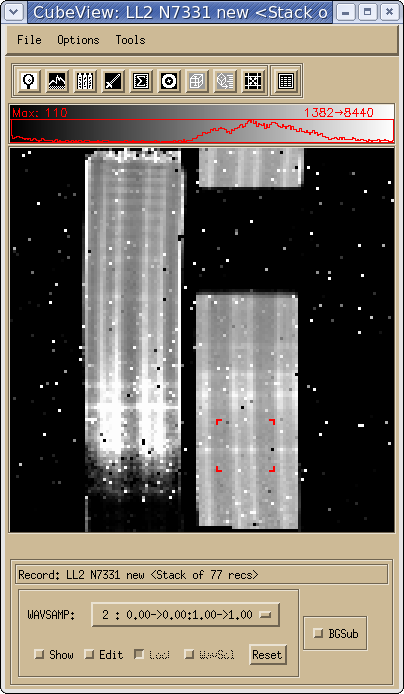 With:
With: 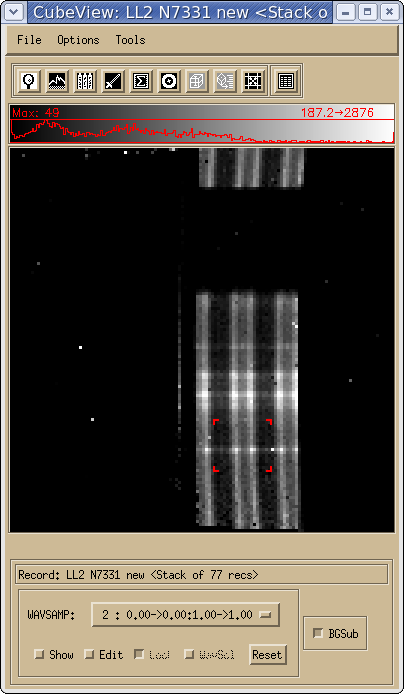
All BCDs were taken over the course of ~1 hour. Some static bad pixels do remain on order, but the majority are well recovered by this type of subtraction. An ancillary benefit is the reduction/removal of the LL1 fringing which results from filter delamination. Since the background used in the subtraction was of such high signal-to-noise, little additional noise was injected into the spectrum.
Without: 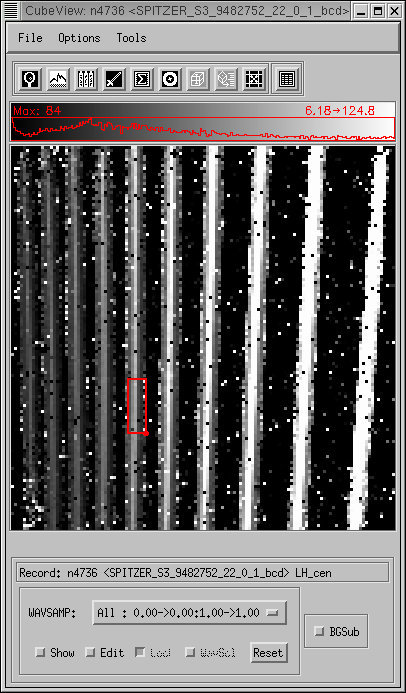 With:
With: 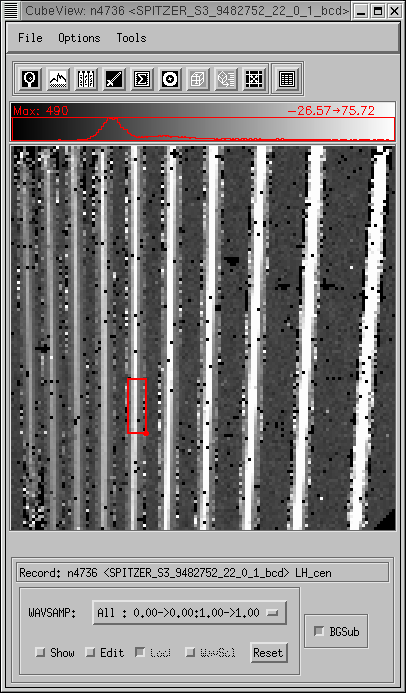
Since the data set we used to produce this did not have dedicated sky frames, we used low flux frames as stand-ins, so some object self-subtraction occurred. The crust visible on the edges of the orders is an artifact of the LH flat, and is expected to be greatly reduced with the flats slated for August, 2004. The remaining black pixels are NaN'd in the original frames.
Suppression of rogue pixels is evident on-order, though not as obviously as for LL. Suppression between orders is very good. Another example using a low flux source, with 15 BCD frames used to create a sky for subtraction from one of them:
Without: 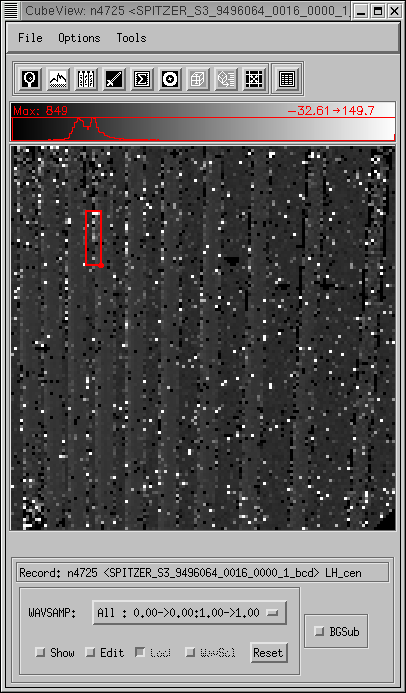 With:
With: 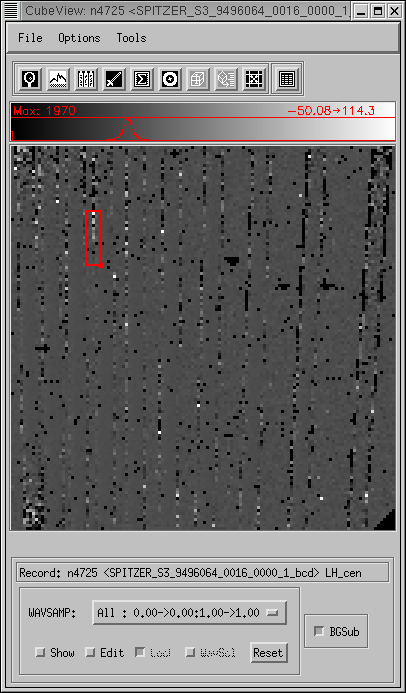
A straight full-slit extraction before (colored) and after (white) background subtraction illustrates the improvement:
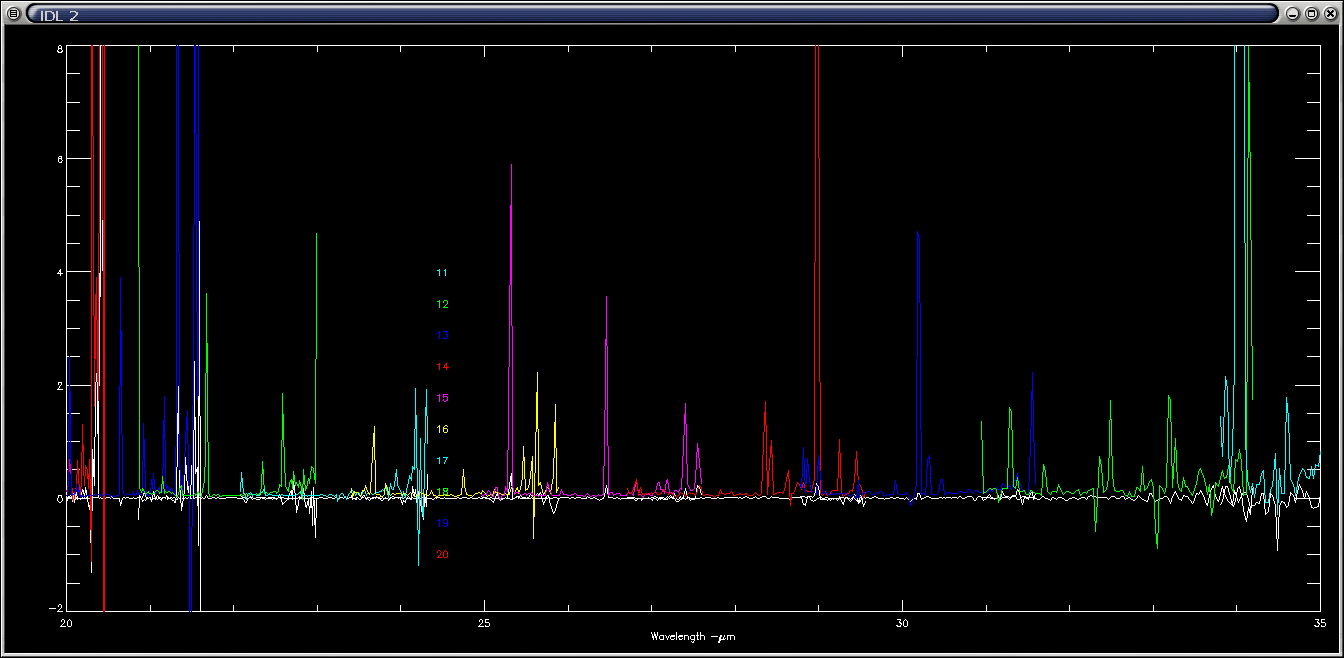
The subtraction of high quality, tailored background observations as illustrated above will remain the best method to remove background emission and treat these rogue pixels. However, many programs do not have the luxury of dedicated concomitant background observations for all modules and orders.
During routine IRS observations, dark sky measurements are taken at regular intervals (originally, every 12 hours) to track pixel response and other variations. Currently, these data are not used in the three dimensional dark subtraction thread of the IRS pipeline; instead a superdark constructed of many different dark cubes from older observations of low background regions are used.
Depending on the typical time scale of rogue pixel variability, it may be possible to use most-recent-in-time dark observations gathered during routine IRS observations to perform a similar beneficial subtraction as is found when dedicated backgrounds are used. Whether this correction would be performed in toto on the entire BCD, or only on selected problematic pixels remains to be seen.
We propose to test this hypothesis by collecting all darks for two different IRS campaigns (one older, and one very recent) and applying them to science data. We will explore the quality of the subtraction as a function of time differential between dark and science observations, and assess the typical S/N degradation imposed by the subtraction.
Currently, since dark subtraction occurs in 3D, darks are not run through the science pipeline, and are thus not converted into the BCD products which are suitable for this type of testing. For this exercise, we need darks which have been treated as science data (specifically as low-background zody+cirrus measurements). Presuming they sample the same relative low background fluxes as do the superdarks, the subtraction will not remove background from science observations, but will hopefully contain useful information on the rogue pixel pedestal values.